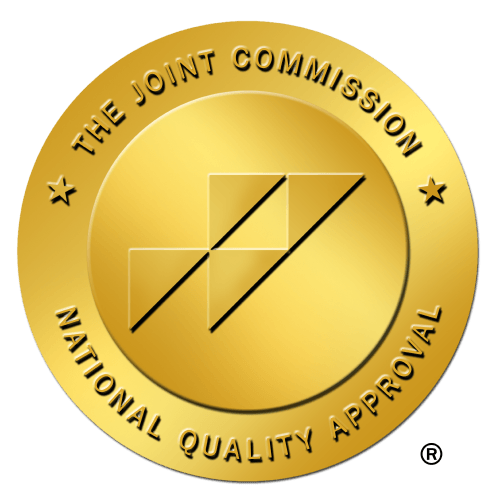Generalized Anxiety Disorder F41.1


Struggling with generalized anxiety disorder F41.1? Learn what this diagnosis means, its symptoms, and the best strategies for managing anxiety effectively.
Living with generalized anxiety disorder F41.1 can feel overwhelming, with constant worry and tension affecting every aspect of daily life. This condition goes beyond occasional stress—it creates persistent anxiety that can disrupt relationships, work, and overall well-being. Understanding generalized anxiety disorder F41.1 is crucial for recognizing its impact and finding effective ways to manage it. At The Forge Recovery Center, we specialize in helping individuals like you regain control through compassionate, evidence-based treatment. You don’t have to navigate this alone.
In this article, we will explore what this diagnosis means, its symptoms, causes, and the best strategies for managing anxiety effectively.
What Is Generalized Anxiety Disorder (F41.1)?

Generalized anxiety disorder (GAD) is a chronic mental health condition characterized by excessive, persistent worry that is difficult to control. Unlike occasional stress or anxiety that comes with life’s challenges, GAD causes ongoing nervousness and fear, even when there’s no clear reason for concern. The International Classification of Diseases (ICD-10) designates GAD under the code F41.1, officially recognizing it as a medical condition that requires professional attention.
How GAD Differs From Other Anxiety Disorders
GAD is often confused with other anxiety-related conditions, but key differences set it apart:
GAD vs. Panic Disorder: While panic disorder involves sudden, intense panic attacks, GAD is marked by a constant state of worry rather than acute episodes of fear.
GAD vs. Social Anxiety Disorder: Social anxiety disorder is centered on fear of social situations and judgment, whereas GAD involves broader worries about multiple aspects of life, including work, health, and personal relationships.
GAD vs. Phobias: Phobias are triggered by specific fears (e.g., heights, spiders), whereas GAD is a more generalized sense of anxiety not tied to a single source.
Common Misconceptions About GAD
Many misunderstandings surround generalized anxiety disorder F41.1, leading to delays in seeking help. Some of the most common myths include:
“Everyone worries—GAD isn’t a real condition.” While occasional worry is normal, GAD causes excessive anxiety that interferes with daily life and doesn’t go away.
“You just need to relax.” People with GAD can’t simply “turn off” their anxiety, as it stems from brain chemistry and psychological factors.
“If you don’t have panic attacks, you don’t have an anxiety disorder.” Many assume anxiety disorders always involve panic attacks, but GAD manifests as persistent, low-grade worry rather than sudden panic.
At The Forge Recovery Center, we understand how debilitating GAD can be. Recognizing the signs and seeking professional support can help you regain control over your thoughts and emotions.
Symptoms of Generalized Anxiety Disorder F41.1
Generalized anxiety disorder (GAD) F41.1 manifests through persistent and overwhelming worry that goes beyond normal stress. This anxiety is often disproportionate to the situation, making daily tasks feel daunting and exhausting. While symptoms can vary from person to person, common signs of GAD include both psychological and physical effects.
Primary Symptoms of GAD
1. Excessive, Uncontrollable Worry
Constant anxiety about everyday concerns (work, health, relationships, finances)
Difficulty managing or shutting off anxious thoughts
Worrying even when there’s no clear reason
2. Physical Symptoms
Muscle tension, tightness, or body aches
Chronic fatigue, even with enough rest
Restlessness or feeling "on edge" all the time
3. Sleep Disturbances
Difficulty falling or staying asleep due to racing thoughts
Frequent nightmares or waking up feeling unrested
Insomnia leading to daytime exhaustion
4. Difficulty Concentrating
Trouble focusing on tasks, conversations, or decisions
Mind going blank due to excessive worry
Decreased productivity at work or school
How Symptoms Affect Daily Life
For many individuals, generalized anxiety disorder F41.1 makes even simple tasks feel overwhelming. The constant mental strain can lead to missed workdays, strained relationships, and an overall decline in quality of life. Some may develop coping mechanisms, such as avoidance or over-planning, that only reinforce anxiety in the long run.
Are You Struggling with Mental Health or Addiction?
We Can Help. Call Us Now!
CALL: 877-839-1772
What Causes Generalized Anxiety Disorder?

The exact cause of generalized anxiety disorder (GAD) F41.1 isn’t always clear, but research suggests it develops from a combination of genetic, biological, and environmental factors. Anxiety isn’t simply a personality trait or a response to stress—it’s often rooted in deeper physiological and psychological mechanisms that make it difficult to control. Understanding these underlying causes can help individuals recognize that their anxiety is not a personal failing but a condition that can be managed with the right support.
1. Genetic Factors and Family History
Anxiety disorders tend to run in families, suggesting a genetic component. If you have a parent or close relative with GAD, you may be more likely to develop it yourself. However, genetics alone do not guarantee you will experience anxiety—it’s often a mix of inherited traits and environmental influences that trigger symptoms.
2. Brain Chemistry and Neurotransmitter Imbalances
The brain plays a significant role in regulating emotions, and imbalances in neurotransmitters—chemicals that send messages between nerve cells—are linked to anxiety disorders. Key neurotransmitters involved in GAD include:
Serotonin: Helps regulate mood and emotions. Low levels are associated with increased anxiety.
Gamma-Aminobutyric Acid (GABA): Acts as a calming neurotransmitter. A lack of GABA can lead to heightened nervous system activity, making it harder to relax.
Norepinephrine: Involved in the body’s stress response. Overactivity can contribute to excessive worry and fear.
When these chemical messengers are out of balance, the brain may remain in a heightened state of fear and worry, even in non-threatening situations.
3. Environmental and Psychological Triggers
Even if you have a genetic predisposition or brain chemistry imbalances, certain life experiences can trigger or worsen generalized anxiety disorder F41.1:
Chronic Stress: Ongoing work pressure, financial difficulties, or caregiving responsibilities can lead to persistent anxiety.
Trauma and Early Childhood Experiences: People who have experienced abuse, neglect, or a significant loss in childhood may be more prone to developing GAD later in life.
Major Life Changes: Moving, job loss, relationship issues, or health problems can create uncertainty and anxiety.
Perfectionism and Overthinking: A tendency to overanalyze situations, fear failure, or struggle with perfectionism can contribute to chronic worry.
Understanding Your Anxiety and Seeking Help
Because GAD often develops due to a mix of these factors, treating it requires a holistic approach that addresses both biological and psychological causes. At The Forge Recovery Center, we help individuals understand their anxiety, identify personal triggers, and develop coping strategies tailored to their unique experiences. If you or a loved one is struggling with persistent anxiety, professional support can make a difference.
Diagnosis and When to Seek Help

Recognizing generalized anxiety disorder (GAD) F41.1 and seeking professional help is a crucial step toward managing anxiety effectively. Many people live with excessive worry for years, assuming it’s just part of their personality or something they have to endure. However, when anxiety becomes persistent and interferes with daily life, it may be time to seek a formal diagnosis and professional support.
How Generalized Anxiety Disorder F41.1 Is Diagnosed
Mental health professionals use specific criteria to diagnose generalized anxiety disorder F41.1, typically following the Diagnostic and Statistical Manual of Mental Disorders (DSM-5) or ICD-10 guidelines. A diagnosis is based on:
Excessive worry and anxiety occurring more days than not for at least six months
Difficulty controlling anxious thoughts
Presence of at least three or more symptoms, such as:
Restlessness or feeling on edge
Fatigue or low energy
Difficulty concentrating or mind going blank
Irritability
Muscle tension
Sleep disturbances (difficulty falling or staying asleep)
A comprehensive evaluation will also assess:
The severity of symptoms and their impact on work, relationships, and daily activities
Medical history and any underlying conditions that may contribute to anxiety
Lifestyle factors, substance use, or recent stressors that could be worsening symptoms
When to Seek Professional Help
If your anxiety feels overwhelming, it’s important to recognize the signs that indicate a need for professional support. You should consider seeking help if:
Your anxiety is persistent and lasts for months, rather than coming and going with specific stressors.
Worrying interferes with your ability to focus at work, maintain relationships, or perform daily tasks.
You experience frequent physical symptoms like headaches, muscle tension, or digestive issues.
Your anxiety leads to avoidance behaviors, preventing you from engaging in activities you once enjoyed.
Sleep problems, irritability, or racing thoughts make it difficult to function normally.
What to Expect During a Diagnosis
A mental health professional—such as a therapist, psychiatrist, or psychologist—will conduct an initial assessment to understand your symptoms and history. This may involve:
Clinical Interview – A detailed conversation about your anxiety, triggers, and how it affects your life.
Standardized Questionnaires – Tools like the Generalized Anxiety Disorder-7 (GAD-7) scale may be used to measure symptom severity.
Medical Evaluation – In some cases, a doctor may check for underlying medical conditions that could contribute to anxiety (e.g., thyroid disorders).
Taking the Next Step with The Forge Recovery Center
If you suspect you have generalized anxiety disorder F41.1, professional treatment can provide clarity and relief. At The Forge Recovery Center, we offer personalized anxiety treatment plans that include therapy, medication management (if needed), and holistic approaches to help you regain control of your life. Seeking help is a sign of strength—and the first step toward lasting relief.
Are You Struggling with Mental Health or Addiction?
We Can Help. Call Us Now!
CALL: 877-839-1772
How to Manage Generalized Anxiety Disorder F41.1
Managing generalized anxiety disorder (GAD) F41.1 requires a combination of professional treatment, lifestyle changes, and strong support systems. While anxiety may not disappear entirely, the right strategies can help you regain control, reduce symptoms, and improve your overall well-being.
Professional Treatment Options
Therapy is one of the most effective ways to manage GAD. Mental health professionals use evidence-based techniques to help individuals identify and challenge anxious thoughts.
Cognitive Behavioral Therapy (CBT)
CBT is the gold standard for treating generalized anxiety disorder F41.1. It helps individuals recognize and reframe negative thought patterns that contribute to excessive worry. Through CBT, you can:Identify triggers and automatic anxious thoughts
Develop healthier ways of thinking and coping
Practice gradual exposure to fears in a controlled environment
Exposure Therapy & Mindfulness-Based Therapies
Exposure therapy helps individuals gradually face anxiety-provoking situations instead of avoiding them, reducing fear over time.
Mindfulness-based cognitive therapy (MBCT) teaches meditation and breathing techniques to stay present and manage distressing thoughts more effectively.
Medication for GAD
For some individuals, medication can be a helpful tool in reducing anxiety symptoms, especially when therapy alone is not enough. Common medications include:
Selective Serotonin Reuptake Inhibitors (SSRIs) – First-line treatment for GAD (e.g., Prozac, Zoloft, Lexapro). They help regulate serotonin levels to improve mood and reduce excessive worry.
Serotonin-Norepinephrine Reuptake Inhibitors (SNRIs) – Similar to SSRIs but also affect norepinephrine (e.g., Effexor, Cymbalta).
Benzodiazepines (Used with Caution) – Short-term relief for severe anxiety episodes (e.g., Xanax, Ativan), but they carry a risk of dependence.
It’s crucial to work closely with a healthcare provider to determine the right medication and dosage, as well as to monitor any side effects or withdrawal risks.
2. Lifestyle Changes for Anxiety Management
Beyond professional treatment, lifestyle habits play a significant role in managing generalized anxiety disorder F41.1. Simple adjustments can lead to long-term improvements in mood and stress levels.
Mindfulness and Relaxation Techniques
Practicing relaxation strategies can help calm an overactive mind and reduce anxiety symptoms. Effective techniques include:
Meditation – Regular mindfulness meditation can rewire the brain to become less reactive to stress.
Deep Breathing Exercises – Techniques like diaphragmatic breathing and the 4-7-8 method help slow heart rate and induce relaxation.
Progressive Muscle Relaxation (PMR) – This involves systematically tensing and relaxing muscle groups to reduce physical tension linked to anxiety.
Exercise and Physical Activity
Regular movement can significantly decrease anxiety by releasing endorphins and reducing stress hormones like cortisol. Activities that help include:
Cardiovascular exercises (walking, running, cycling)
Yoga and stretching to promote relaxation
Strength training to build resilience and improve mood
Diet and Nutrition for Mental Health
What you eat affects brain function and anxiety levels. To support mental well-being:
Eat more: Omega-3 fatty acids (salmon, flaxseeds), complex carbohydrates (whole grains, legumes), and magnesium-rich foods (spinach, almonds).
Avoid or limit: Caffeine, sugar, alcohol, and processed foods, which can increase anxiety symptoms.
Improving Sleep Hygiene
Anxiety often disrupts sleep, leading to a vicious cycle of exhaustion and increased worry. To improve rest:
Set a consistent bedtime and wake-up schedule.
Avoid screens (phones, TVs) at least an hour before bed.
Create a calming nighttime routine (reading, warm bath, meditation).
Reduce caffeine and alcohol intake, especially in the evening.
3. Support Systems and Coping Strategies
Social support plays a crucial role in managing generalized anxiety disorder F41.1. Connecting with people who understand and support you can:
Provide emotional reassurance during high-anxiety moments.
Offer perspective and grounding when worries feel overwhelming.
Reduce feelings of isolation and loneliness.
Support systems can include:
Friends and Family: Open conversations about your struggles can lead to greater understanding and support.
Support Groups: Joining an anxiety support group (in-person or online) can connect you with others facing similar challenges.
Therapist or Counselor: A professional can guide you through coping strategies and personalized treatment plans.
Journaling, Creative Outlets, and Personal Coping Mechanisms
Finding healthy ways to express emotions can help ease anxious thoughts. Some effective strategies include:
Journaling – Writing down thoughts and worries can provide clarity and help process emotions.
Art or Music Therapy – Engaging in creative activities can serve as a therapeutic escape from anxious thinking.
Nature Walks and Outdoor Activities – Spending time outdoors has been shown to reduce stress and anxiety levels.
How The Forge Recovery Center Can Help
At The Forge Recovery Center, we understand how debilitating anxiety can be. Our holistic approach to treatment includes:
Personalized therapy sessions tailored to your specific needs.
Medication management and monitoring for those who need pharmacological support.
Comprehensive wellness programs, including mindfulness, nutrition, and exercise strategies.
Support groups and community resources to help you build a strong recovery network.
If generalized anxiety disorder F41.1 is interfering with your life, seeking professional guidance can make a difference. You don’t have to navigate anxiety alone—support is available, and healing is possible.
Struggling with Generalized Anxiety Disorder F41.1? We Can Help
Living with generalized anxiety disorder F41.1 can be overwhelming, but with the right treatment, recovery is possible. Understanding the symptoms, causes, and management strategies—such as therapy, medication, and lifestyle changes—can empower you to take control of your anxiety. You don’t have to face this alone. At The Forge Recovery Center, we provide compassionate, evidence-based care to help you regain peace of mind. If anxiety is holding you back, let us guide you toward lasting relief. Take the first step today—help is just a call away.
Are You Struggling with Mental Health or Addiction?
We Can Help. Call Us Now!
CALL: 877-839-1772





